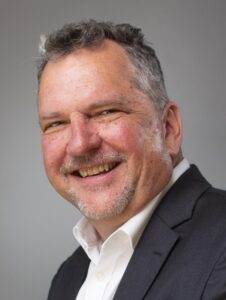Measure Twice, Cut Once—A Roadmap for Enabling VPPs Through Policy and Program Design
Virtual power plants (VPPs), as aggregations of dispatchable distributed energy resources (DERs), can deliver grid services ranging from resource adequacy to reliability at scale—all while making energy more affordable.
Yet, despite their merits, the U.S. utility industry is yet to leverage the full potential of these readily available, affordable, customer-sited resources to add flexibility to the grid. Of course, the decision to incorporate a VPP into daily operations will be informed by multiple factors, many of which vary across utilities. But there are at least two common headwinds.
COMMENTARY
First, we know that a proof-of-concept is an unobjectionable prerequisite for utility-scale VPP deployment. And with some 500 VPP projects deployed across North America, utilities and regulators arguably have that need met. Second, and perhaps most importantly, we know that even with satisfactory pilot program results and modeled outcomes in hand, utilities are too often disincentivized and, in some cases, outright precluded from taking advantage of utility-scale aggregations of connected devices.
Fortunately, just as there are forward-looking utilities, so too are there forward-looking regulatory frameworks. And it’s by peering into the states and regions where they coincide that we can see what the electric grid is capable of.
Want to learn more about virtual power plants, distributed energy resources, and how utilities are interacting with their customers? Plan to attend the Distributed Energy Conference, part of Experience POWER Week, in Orlando, Florida, Oct. 9-11, 2024.
Proof of Concept: California
Start with California, where a dangerous combination of extreme weather conditions, capacity supply shortfalls, and other factors precipitated unprecedented rolling outages in August 2020 and, in turn, mobilized the California Public Utilities Commission (CPUC) to implement the Emergency Load Reduction Program (ELRP) in a matter of months.

In brief, the ELRP began as a seasonal, five-year demand response (DR) pilot program that was limited to the voluntary participation of PG&E’s, SCE’s, and SDG&E’s non-residential customers. Operational by summer 2021, the ELRP’s 200 MW of enrolled flexible capacity was successfully called on four separate occasions in its inaugural season. Beyond the avoidance of service disruptions, the debut of the ELRP resulted in more than $1 million paid-out to participating customers, and prompted the CPUC to undertake additional, incremental steps toward a more flexible grid.

These steps included the extension of the ELRP through 2027, complete with an expanded offering of enrollment opportunities to the residential customers of the state’s three IOUs. Moreover, in August 2022, the California Energy Commission, launched the Demand Side Grid Support (DSGS) Program, which afforded greater swathes of California’s non-residential and residential utility customers—including those not served by an investor-owned utility—expanded opportunities to be compensated for either voluntarily reducing consumption or, importantly, injecting power back into the grid, among other grid services.
The aggregate results of these California emergency reliability programs—delivered by Olivine, a DR and distributed energy resource management system (DERMS) provider—speak for themselves. Together, after showing up on 10 separate occasions during the historic September 2022 heatwave, ELRP and DSGS have since been credited with significantly addressing California’s perennial resource adequacy woes. Moreover, they’ve succeeded in promoting the advantages of voluntary, compensable participation in grid support programs. At the time of this writing, the aggregate flexible capacity represented by these two programs is 932.5% greater than ELRP’s initial 200 MW.

With these outcomes, it’s little wonder why the state has since stepped up its ambitions to leverage demand-side answers—inclusive of market-aware VPPs — to whole-of-system challenges.
Proof of Concept: Massachusetts and New England
Begun in 2016 as a pilot program in Massachusetts, the open-access ConnectedSolutions program was launched at scale in 2019 with the commonwealth’s three IOUs—National Grid, Unitil, and Eversource—as part of an effort to meet statutory energy efficiency and “clean peak” goals with DERs, namely commercial demand response and residential BESS and smart thermostats.
The program, operated by DERMS platform provider EnergyHub, has been tremendously successful across a range of metrics. Chief among them is the finding that, by the end of 2020, flexible capacity enrolled in the program—310 MW across 34,000 voluntary residential and commercial customer participants—was more than triple the 2020 target for the commonwealth’s Clean Peak Energy Standard. As a result, the administration of ConnectedSolutions Massachusetts’ three IOUs succeeded in contributing to a 0.9% reduction in statewide peak summer load by 0.9%.

What’s most compelling, though, are the reasons for the now six-state program’s success. Take National Grid, whose residential and commercial customers enrolled some 174.9 MW of flexible capacity by the end of 2020, resulting in 88 MW in net savings.
The Northeastern heavyweight’s 97% customer retention rate can be attributed to the size, certainty, and variety of available incentives. For instance, both C&I demand response participants and residential customers that enroll in the ConnectedSolutions program earn upfront, annual, and performance-based payments, and they can “value stack” with other programs, such as the ISO-NE capacity market.
Policy Principles for Leveraging the 21st Century’s Greatest Untapped Energy Resource
Fortunately, these success stories are replicable through the inclusion of demand-side resources in portfolio planning. The following policy principles can be used by regulators to inform their policies, and by utilities to implement change to their planning processes, in parallel.
First, utilities and regulators can benefit from integrating DERs and aggregations of DERs into their processes, building-in flexibility to revisit the needs of the evolving grid, and ensuring a level playing field between demand-side and supply-side resources. For evidence, we need only consider the success of ELRP and DSGS in California and ConnectedSolutions in New England.

Second, any effort to bring VPPs to scale is futile without a campaign to deploy DERs. For customers to enroll these assets into VPP programs and reap the benefits, the assets need to be integrated into people’s homes and businesses in the first place. Thus, supporting policy structures such as tax credits and rebates, utility up-front financing, utility on-bill financing, and DER carve-outs for low-to-moderate income or energy-burdened customers is a key first step. These are measures that, as Green Mountain Power and the Vermont PUC have shown, can be incrementally adapted as system needs change, or customer demand rises.
And third, customers must be fairly compensated for the use of these assets and the wealth of grid services that DERs and aggregations of DERs provide. In practice, this may encompass ongoing performance payments, as well as time-varying and dynamic tariff structures.
If the unifying objective of utilities and regulators is to ensure that present and incoming loads don’t jeopardize grid reliability or affordability, then VPPs are the key to delivering the reliable, resilient, sustainable, and affordable electricity system the 21st century needs.
Like the utilities they oversee, public service commissioners are keen to balance urgency with prudence, to inform their actions with evidence. To that end, the Virtual Power Plant Partnership (VP3) invites readers to learn more about active VPP deployments—and the policies that enabled them. For more information on VP3, visit vp3.io.
—Liza Martin is a communications specialist on RMI’s Carbon-Free Electricity team, where she focuses on leveraging strategic communications tactics to mobilize key stakeholders in the electric sector around affordable and reliable grid decarbonization. Mary Tobin is a senior associate in RMI’s Carbon-Free Electricity practice, where she leads the “Working with Utilities” working group for the Virtual Power Plant Partnership (VP3) initiative. VP3 is a coalition of industry voices working to scale the market for virtual power plants by influencing the necessary policies, regulations, and market rules—in a way that benefits both the grid and communities. Avery McEvoy is a senior associate in RMI’s Carbon-Free Electricity practice, where she leads the “Regulatory and Policy” working group for the Virtual Power Plant Partnership (VP3). VP3 is a coalition of industry voices working to scale the market for virtual power plants by influencing the necessary policies, regulations, and market rules—in a way that benefits both the grid and communities. Avery shapes strategy and analysis, project manages and facilitates convenings, and leads member engagement. Angela Kent is the Regulatory Affairs Manager at VP3 member company EnergyHub, the electric power industry’s most experienced provider of distributed energy resource management systems (DERMS) for utilities. Angela supports the utility program and regulatory policy analysis, strategy, and advocacy efforts of VP3. Joe Bourg is the vice president of Business Development at VP3 founding member company Olivine Inc., an industry-leading virtual power plant company shaping the future of distributed energy resource management and grid services. Joe is the co-chair of the “Working with Utilities” working group at VP3, where he leverages his 30 years of energy industry experience to support the vision and mission of VP3.